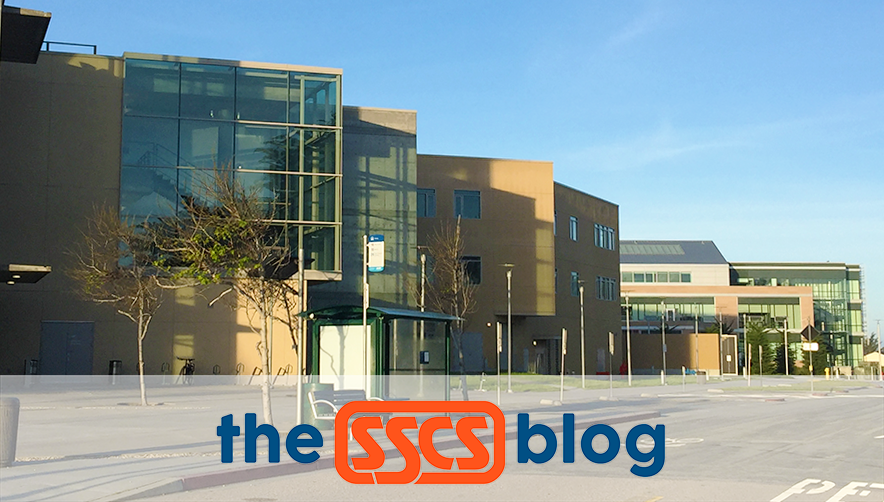
The crown jewel of the reborn Fort Ord is California State University Monterey Bay, a valued resource for nearby SSCS.
This is part three of a three-part series. Make sure you read Part 1 and Part 2 before proceeding.
On Monday, September 4, 1995, we found ourselves standing outside, back behind an arena’s worth of bleachers. In the middle of a packed standing room only crowd, we craned our neck to catch the sunlight reflecting off the white-gray hair of the man addressing the crowd.
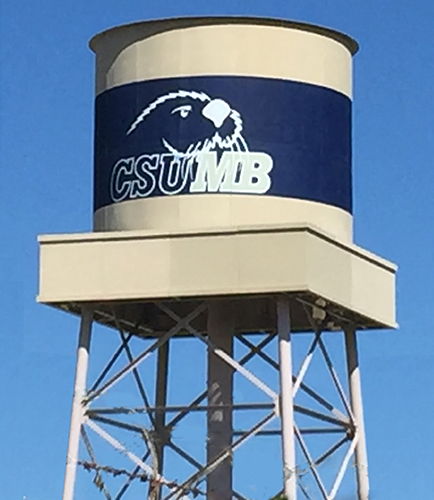 It was kind of a big deal. The speaker was the President of the United States, and we were on the grounds of SSCS’s neighbor, the former Fort Ord. The occasion? The official dedication for California State University Monterey Bay (CSUMB).
It was kind of a big deal. The speaker was the President of the United States, and we were on the grounds of SSCS’s neighbor, the former Fort Ord. The occasion? The official dedication for California State University Monterey Bay (CSUMB).
Though Fort Ord was one of the largest bases ever to close, it was far from the only one. Under a process called the Base Realignment and Closure (BRAC), more than 350 military installations were closed from 1988–2005.
Ford Ord’s decommissioning was relatively early during this period, at a time of spirited discussion over how to changeover once public lands to the private sector. The base got a lot of attention, not only because of its immensity, but because of its natural beauty and proximity to well-known tourist destinations. As such, it became a de facto model for transitioning, and—as touched upon in the previous two parts of this blog—the effort has succeeded in a number of ways.
CSUMB maintains a low profile within its environment by architecture and design, an attempt to blend the institution as unobtrusively as possible into its wild natural surroundings. (It should be mentioned that this approach is more often than taken by the newer, nearby housing developments.)
You can see how well the campus blends in from this photo taken across Fort Ord overlooking the campus, which is probably about a half mile away. You can barely see in in the background:
Earth colors abound, the upward reach of buildings is contained, and when possible, former military buildings have been repurposed into educational facilities. Though the campus can seem austere, touches like this do give the campus a distinct personality.
Students benefit from all the open space. Running and dirt biking are popular pastimes, as you might imagine.
With a student population of almost 7,000 (up from 654 on Day One), CSUMB has become an important, convenient educational resource for young people in Central California. It is also a rich source of talent upon which businesses in the local area capitalize. This is certainly true in the case of SSCS. We are pleased to say that we employ several graduates as software engineers. Our summer intern program is dotted with CSUMB graduates, as well.
To provide technology undergrads a rapid path to a degree and, soon after, the work force, CSUMB—in conjunction with Salinas’ Hartnell community college—provides an innovative program called “CSin3.” The curriculum leads to a BS in Computer Science in a brisk three years, “a streamlined pathway to education,” the program’s web page states.
When they are accepted into the program, enrollees receive scholarship dollars. A limited number are accepted each year; students start with a specific group of classmates with whom they remain for the duration of their studies. (CSin3 calls this approach, “cohort-based”).
We caught up with one of our developers to get a personal perspective on the benefits of CSin3.
“I enrolled at another university, but being the first in my family to go to college, I found myself lost in the system,” he says. “It was challenging not just in terms of putting together a course path and finding available classes that would allow me to graduate in a reasonable amount of time, but in terms of finding satisfactory financial and housing arrangements. It was a lot to handle.”
Though he eventually left that institution, he never lost his desire to earn a degree and eventually was accepted into CSUMB’s CSin3. “It was a completely different experience—a much better one,” he says. “By far the biggest benefit was not having to navigate the school system to find and enroll in the courses I needed to graduate. Every course for each semester is predetermined; just as importantly, it’s a given that there will be a seat for you in every required class. That’s almost as big a deal as the scholarship money attached to acceptance in the program.”
By graduating in a minimum of time without crippling loan obligations, CSin3 students can begin making a living for themselves and their dependents much sooner than in other educational models. “That was important to me,” our engineer notes. “I was allowed to focus on school, not how to pay for day-to-day expenses. That I could graduate in three years made it easier for my family to get through the time I was in school and not working. I think it’s good for the community, too, because it deploys the available workforce into the working world much faster.”
To the soldiers that first assembled in Camp Ord in 1917, this kind of educational innovation, not to mention subject matter, would have seemed more in line with the science fiction novels of the day. One hundred years later, in a world where yesterday’s science fiction often turns into reality, the future of the old Fort Ord seems limited only by the imagination of those involved in transitioning it. Frankly, we’re looking forward to what happens next, and when it does, we’ll tell you all about it.

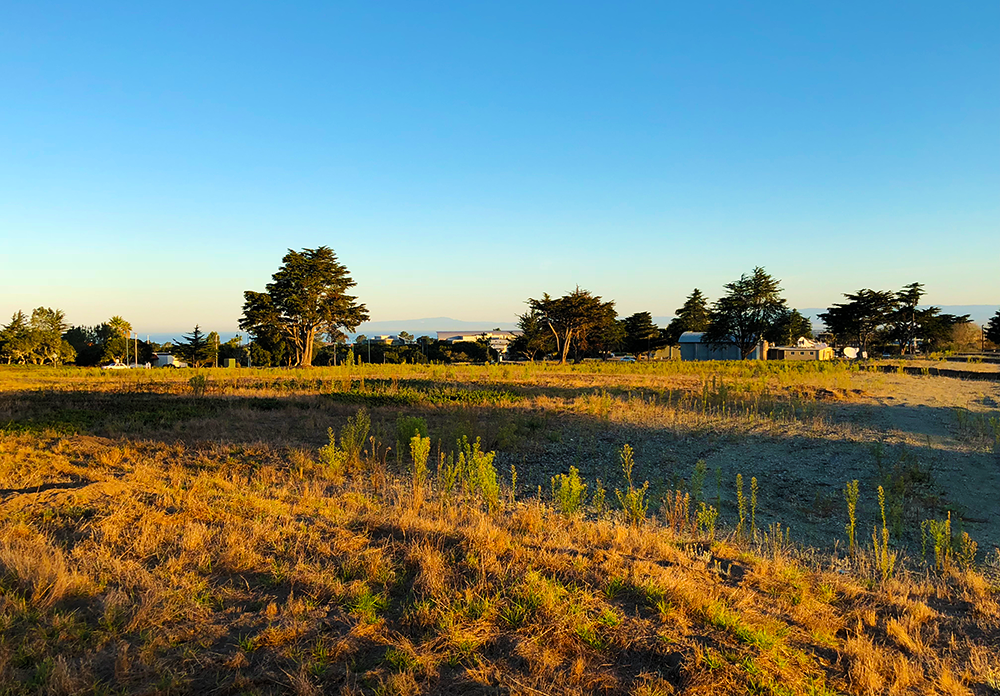
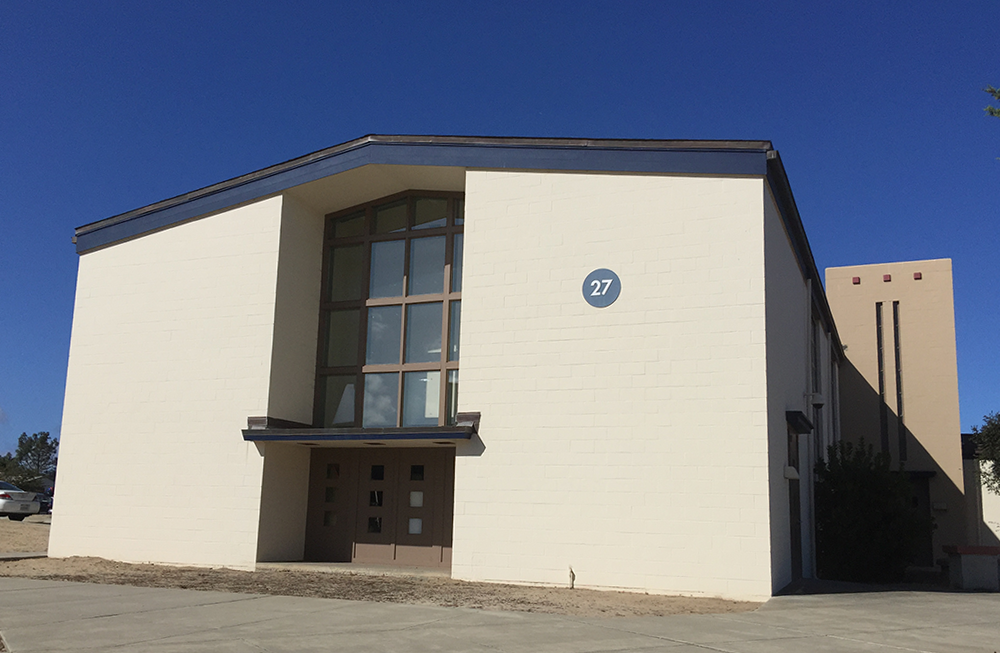
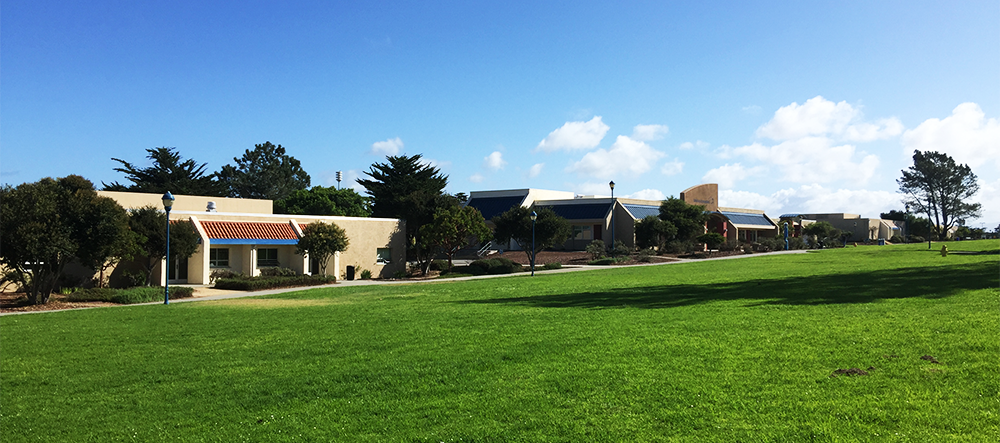
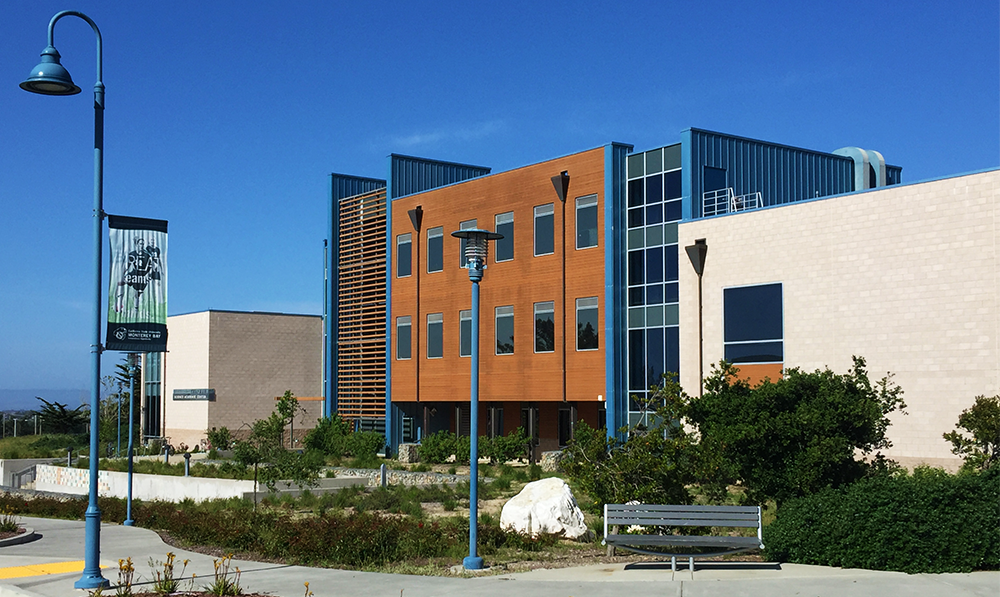
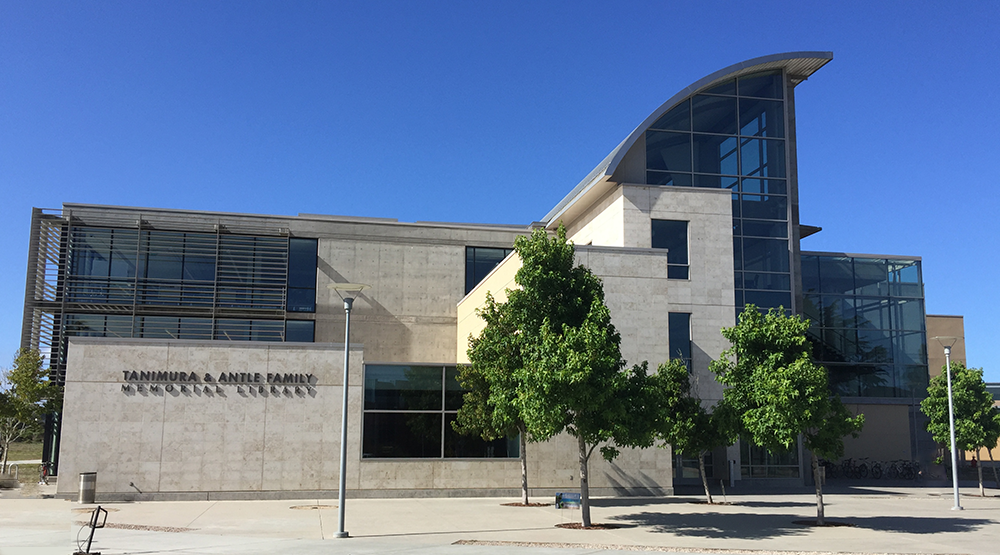
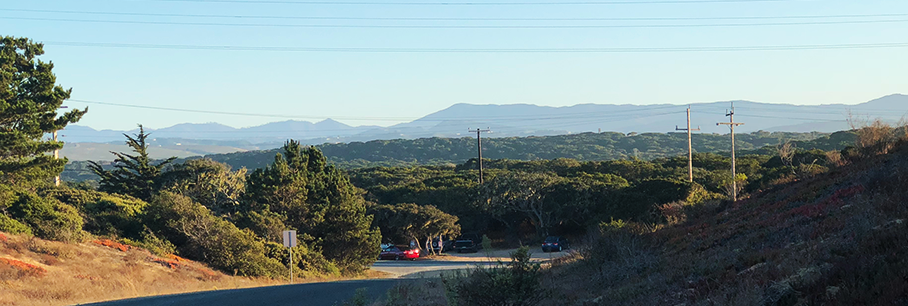




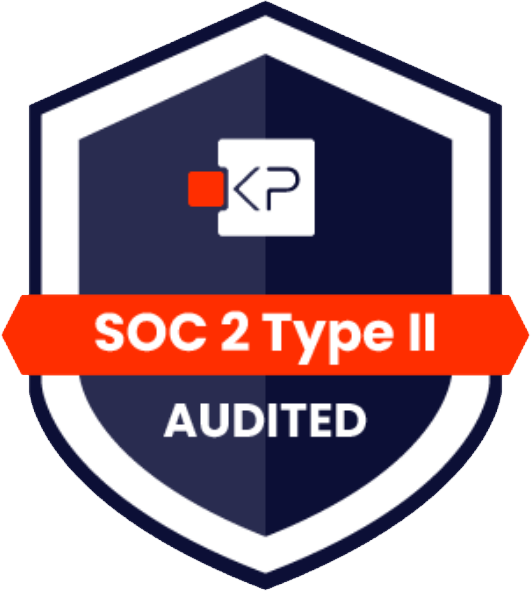
Leave A Comment